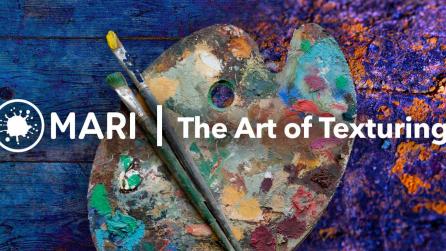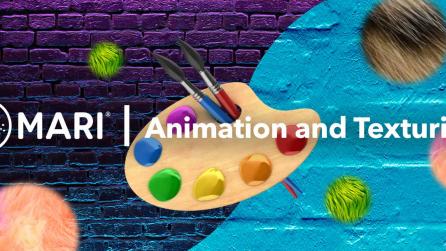Work smarter, not harder, with these Nuke family features
Visual effects deadlines are getting tighter, while the volume and complexity of the work involved continues to rise. 2-3000 VFX shots in a single feature is no longer unusual, and the rise of streaming television brings with it an unprecedented demand for high quality VFX. The increasingly common sentiment shared amongst studios and artists across the industry is: too much work, not enough time to do it in.
In a previous article, we explored how compositing leads and supervisors can mitigate this issue by making use of Nuke Studio and Hiero’s shared timeline for a more collaborative review process, enabling the whole team to work faster and more efficiently.
But how can individual artists make use of these same principles to streamline their creative process? In this follow-up article, David Nolan, Performance Product Manager for Nuke, and Juan Salazar, Senior Creative Product Manager, explore this question by looking at some key Nuke family features designed to improve efficiency and cross-collaboration.
So without further ado—first up…
Live Groups
Introduced in Nuke 11, Live Groups in Nuke support powerful workflows for teams of artists, allowing them to more easily share work between them and reuse set-ups across multiple shots.
As a type of container node, Live Groups work in a similar way to Nuke's Groups and Gizmos. But whilst Nuke's traditional Gizmos are static—each is a copy of an original script with no knowledge of, or reference to, that script—Live Groups are dynamic. Each instance of a Live Group has a link to the Nuke script it represents. When the original script is changed, each instance of the Live Group can be updated in one click to reflect these changes. This makes it quick and easy to make changes in one place, and push those changes out to an entire team.
“Live Groups can be used in conjunction with LiveInput nodes as part of three intended workflows,” David Nolan explains. “The first is for the nodes to be used as a shared tool across multiple comps as an alternative to gizmos or toolsets.
The second intended workflow—and most relevant for artists looking to collaborate more effectively—allows for artists to work on individual sections of the same shot. Using Live Groups, these sections are linked to a master script downstream, so when one artist publishes a new version of their section, any other artists can version up the Live Group and see the update in their own scripts immediately whilst iterating at their own individual pace.
Plus, through overriding User Knobs on the Live Group, an artist can make changes to its output directly on the LiveGroup node itself, without opening the Live Group script or affecting any other scripts using that Live Group. Python callbacks allow studios to integrate Live Groups into their workflow, from creating notifications when a new version of a Live Group is published, to managing which users can change Live Groups.
Lastly, Live Groups can be a powerful templating tool. Sections of a template can be encapsulated in a Live Group, and used by every artist working on a sequence. As updates are made to that section of the template, they can be pushed out to the entire team and every shot will pick them up on demand. For example a template section, which applies a grade to a specific item of clothing on a CG character, could be used in every shot featuring that character. If the supervisor decides to change that grade then the change only happens once, inside the Live Group, and will propagate out across every shot using the Live Group.”
David continues: “Similarly, an artist could create a Live Group which uses Nuke's 3D system to build up an environment for a sequence. Each compositor on that sequence could simply plug the camera for their specific shot into the Live Group to get the environment for their shot. And as the environment artist keeps refining the background Live Group, every shot will automatically get the changes.”
Following the introduction of Live Groups, we worked closely with teams using Live Groups in production and as a result have introduced clear UI notifications and corresponding Python callbacks. These give artists more visibility over the state of a Live Group and pipelines greater flexibility when integrating Live Groups into their workflow.

HieroPlayer: your hero for timeline review
In part one of this article series, we espoused the benefits of timeline review for supervisors and leads working in Nuke Studio and Hiero. Better communication and visibility over their teams and projects were just some of the advantages to this way of working.
Fortunately, artists can feel these same benefits by using HieroPlayer as their desktop player to review multi-shot timelines in context, with seamless timeline sharing with Nuke Studio and Hiero.

“Having whole teams work in the same ecosystem of tools, and on the same timeline, proves hugely beneficial to the speed at which they can operate,” Juan Salazar comments. “Supervisors can update timelines in Nuke Studio and Hiero, and their team can quickly access these new timelines in HieroPlayer.
Additionally, the consistent viewing environment between the Nuke family editorial and review tools ensures everyone can be confident they are looking at the same image, with the correct colour transformations applied. Reviewing their work in HieroPlayer means artists don't have to guess at what their shot should look like—they have all the context available at their fingertips, so they can match the desired look faster.”
To further extend this shared ecosystem, Nuke 12.1 introduced the option to render a flipbook from Nuke directly into HieroPlayer, so artists can review their shots in context directly from Nuke with consistent color and can even compare versions of flipbooks. And by utilising Nuke's Frameserver, flipbooks can be rendered in the background, so artists can keep working while rendering on the same machine.
Simply put, the benefits of timeline review that HieroPlayer unlocks for artists cannot be understated. As every artist can attest to, the creative process is often fluid and mercurial. An edit is never really finished—it’s alway changing. To allow for this, HieroPlayer provides artists the ability to playback the VFX timeline and compare versions of renders quickly, all whilst seeing this in context of the entire sequence. They can see the changes, annotations, edits and status notifications for an at-a-glance view of any work needed on multiple shots at a time.
Speaking of which...

Multi-shot Mindset
Typically, compositing artists work with single shots, often dedicating days or even weeks of work on just a few frames at a time. This is in contrast to other parts of the production pipeline, such as in the case of grading and lighting, where sequence-based workflows are common and utilized in products like Foundry’s Katana.
Applying this same workflow to compositing is challenging, not least because each shot at this stage needs bespoke changes—even if shots are extremely similar. And for bigger shots, in which scale and complexity reign supreme, batching these together into multiple shots becomes very tricky.
Some studios are already seeing efficiency gains through templating systems—often incorporating Nuke’s LiveGroups, Toolsets and Gizmos—as well as using Nuke Studio and Hiero to set up a sequence of shots, and then generating Nuke scripts for each shot with the appropriate footage and color transforms in place.
Both approaches serve as a means for studios to begin thinking beyond single-shot compositing, to multiple shots, in a bid to help artists fulfil their creative vision faster. However, there is still potential to add a new level of efficiency through sharing more work across the compositing scripts themselves.

For example, an artist might be assigned 4 shots from a sequence that are all visually similar—a medium shot of an actor, with a CG background of a northern-facing view of the environment. These shots have near-identical content, and the work to complete them is very similar. In the existing single-shot paradigm, an artist would work up one shot as far as possible, then copy and paste nodes from that first shot into the other 3 shots, tweaking things as needed.
When they get notes, they will again make changes in the first shot, and then attempt to recreate those changes in the other 3 shots. There is a lot of copying, pasting and memory-work involved to keep track of what’s been changed, and where, across multiple scripts.
Multi-shot compositing aims to solve this challenge, as David explains: “The goal is to enable sharing of work and resources across shots, reducing the overhead and enabling more work to be completed in less time,” David continues. “This is a paradigm shift in compositing workflows; one which requires a change in mindset.
Powerful tools already available in the Nuke family, such as Nuke's Live Groups and the shared Nuke Studio/Hiero/HieroPlayer timeline, go a long way in facilitating multi-shot workflows for a more holistic creative experience, but they are not the whole story.”
Indeed, further workflow improvements are needed to fully unleash the potential of multi-shot compositing. The Nuke team is taking an in-depth look at how the demands of the industry have changed, and what the new workflows will need to be to support these changes. Rest assured we have some exciting plans underway.

Review with a view to the future
Combined, the above elements unlock a huge amount of potential for artists working in post-production. Live Groups, shifting to timeline review and the multi-shot mindset that this necessitates all fuel a faster creative process, one which encourages a clearer consistency of visualization, and, in turn, wider creative collaboration across teams.
What’s more: if artists can see their work in context, such as by using HieroPlayer to review projects, they give back time to supervisors and project leads who would otherwise be doing this, with the added bonus of being able to see shots and fix problems before they even go to dailies.
We’re proud to offer powerful tools already as part of the Nuke family which enable artists to get more work done, faster. As the industry continues to shift and develop at pace, our customers and artists can be confident that we’re working hard to meet and solve any potential future challenges that may present themselves in post-production. More powerful tools and workflows are underway, and coming soon—watch this space.
In the meantime, to find out how HieroPlayer can take your review efforts to the next level, request a call-back and our team will be happy to answer your questions.
Discover Live Groups in Nuke:
If you want to learn more, explore our Editing & Management solutions page and see how it can support your review process

